I’ve noticed that Americans, for the most part, have a very limited perception of Japanese music. If we think of modern J-Pop it’s always in terms of anime music and teenybopper idol groups (both male & female), and when it’s older Japanese music we jump all the way to the Feudal era oriental-style music or at least Enka music from the Showa era. However, during the ‘70s New Music scene, various artists went out of their way to challenge the status quo of what Japanese music was supposed to sound like, from supergroup Tin Pan Alley to psychedelic rock group Happy End, to superstar singer-songwriter Yummi Arai, and among all these acts they were all connected to one key individual; a man named Haruomi Hosono.
Haruomi Hosono, or just “Harry” for short, was an exceptional producer, singer-songwriter & bassist and to this day is considered one of the architects of modern Japanese music. Harry was aware of the various stereotypes that the western world had about Asian culture, especially music, and was known for composing songs that flipped those stereotypes on their heads. One of his most famous albums to achieve this was known as the Yellow Magic Orchestra released in 1978 by the band of the same name, founded by Harry, along with Percussionist Yukihiro Takahashi( 高橋 幸宏 ), and Ryuichi Sakamoto( 坂本 龍一 ).
THE HISTORY
Yellow Magic Orchestra, or YMO for short, was initially conceived by Hosono as a one-off exploration of computerized music revolutionized by German band Kraftwerk & Japanese composer Isao Tomita (冨田 勲), as well as a parody of Exotica, a genre of music invented by pianist Martin Denny, built off of Western conceptions of the orient. However, YMO wasn't Harry’s 1st foray into electronic music that year, Parisio released on April 25th featured songs that combined folk & jazz fusion with techno-pop, and Cochin Moon, released September 21st, was Harry’s first completely electronic solo album. Both albums also featured future YMO members, Yukihiro Takahashi & Ryuichi Sakamoto, although during this time frame they were still known as the Yellow Magic Band. However, the three members were already veterans of the music industry before coming together, Yukihiro was the drummer for the Sadistic Mika Band (later known as just The Sadistics) and Sakamoto was working on his own solo debut album, Thousand Knives that same year.
The 1st YMO album began production in July 1978 at a Shibaura studio in Tokyo, and utilized a wide variety of electronic music equipment, most notably (but not limited to) the Roland MC-8 Microcomposer, and was the earliest known pop album to use it. The microcomputer was programmed by pioneer Hideki Matsutake (松武秀樹 ), who came on board after helping Ryuchi Sakamoto on Thousand Knives. The only acoustic instruments used during recording were a Steinway piano, drum set, and a marimba. Hosono of course was the main producer, handling the Bass and the arrangements for all the songs, Yukihiro was in charge of the drums, percussion, and vocals (La Femme Chinoise), and Sakomoto was the main keyboardist, but also handled percussion and orchestration.
Additional vocals were provided by Alfa Records secretary Tomoko Nunoi (布井智子) who could speak French so was invited to provide narration on La Femme Chinoise, and Shunichi “Tyrone” Hashimoto (橋本俊一) for the song Simoon, who has worked previously with Harry’s previous band, Tin Pan Alley. Other guest artists included prolific guitarists Masayoshi Takanakan( 高中 正義 ), who played electric guitar on Cosmic Surfin' and La Femme Chinoise, and British poet Chris Mosdell, who wrote the lyrics for the album and came on board through Takahashi after he discovered his poetry work through the Japan Times newspaper.
YMO had completed recording by September 5, 1978, and was released November 25th the same year. The album sold 250,000 copies in Japan earning it 69th place on the Oricon Pop Charts. However, the accolades didn’t stop in Japan, as Harry intended for YMO to have the potential for reaching success in non-Japanese-language territories as well. Thus YMO was released in the US on 30 May 1979 by A&M Records with a new mix done by Al Schmitt at Capitol Records Studio in Hollywood, California. In the US, YMO entered the Billboard 200 and R&B Albums charts. Its most successful single was Computer Game / Firecracker, which sold over 400,000 records in the United States and was a top 20 hit in the United Kingdom. The band YMO not only became Japan’s hottest pop act, but also an important milestone in music production, influencing and inspiring genres such as chiptune, synth-pop, and even Hip Hop. Firecracker, in particular, became popular in the then-emerging hip hop community, which appreciated the new electronic sounds, and in the Bronx, where it was later sampled by pioneering hip hop artist Afrika Bambaataa in his famous 1983 debut album Death Mix (1983). YMO became such a global phenomenon that they were able to earn a spot on the American TV show Soul Train in 1980, where they performed Firecracker as the first and only Japanese band on the show.
THE MUSIC
Side A
- Computer Game 'Theme from The Circus’: Serves as the prologue to the song Firecracker. All the sound effects come from the 1977 arcade game “Circus” and it features an 8-bit sample of a funeral march.
- Firecracker: A cover of a Martin Denny song from his album Quiet Village. They turned the original quiet oriental lounge track, into an electro chiptune disco number. Has very hip-hop feel to it a whole 6 years before Newcleus came on the scene.
- Simoon: Named after the sandstorms of the Arabian Desert, Simoon is a slow melodic electro lounge song that, according to Hosono, was inspired by the desert scenes in Star Wars. Indeed images of C-3PO & R2-D2 making a lonely trek through the Dune Seas on Tatooine come to mind while listening to this song.
- Cosmic Surfin: A futuristic surf-rock track that was originally introduced in the 1978 album Pacific, which was a collaboration between Harry Hosono, Shigeru Suzuki & Tatsuro Yamashita. The YMO version has a slightly slower tempo and more complex Drums & synths added. It also features Masayoshi Tanaka on electric guitar.
- Computer Game 'Theme from The Invader': Another chiptune interlude, this time it’s SFX from the Game Circus juxtaposed against sound fx from the game Space Invaders.
Side B
- Yellow Magic (東風 Tong Poo, "East Wind"): Arguably the most iconic song on the album written by Ryuichi Sakamoto, It was the first composition of his to be recorded by the band, and the only track on the album to be composed by him. The title came from Jean-Luc Godard's 1969 movie "Le Vent D'Est..." (Wind from the East ), an appropriate name for a synth-pop disco number inspired by Chinese classical music during the cultural revolution in China. The original was an instrumental punctuated by Hosono's funky bass as well as Sakamoto’s sweet improvised piano playing. A 1979 version was released with Minako Yoshida's(吉田美奈子)breathy vocals added in the background.
- La Femme Chinoise: Another important entry in YMO's discography since it opened up the opportunity for the band to be seen not just as an instrumental group but a vocal one as well, featuring french narration by Tomoko Nunoi and the New Wave/Romantic inspired vocals of Yukihiro Takahashi.
- Bridge over Troubled Music: The last Interlude in the album that serves as the prologue to Mad Pierrot. The title is based on the Simon & Garfunkel classic Bridge over Troubled Water.
- Mad Pierrot: The title is derived from the 1965 French film, "Pierrot le Fou" (Pierrot The Madman). Another fast-paced Oriental Synth Pop Dance track in the same vein as Tong Poo. Apparently, the song was so difficult to perform live, that the band decided to stop doing so for a while.
- Acrobat: The final song of the album (unless you have the US version like I do), it takes the Combined circus music & funeral march from the 1st track and turns it into a full dance song, although it's only a minute & a half long.
THE VERDICT

Yellow Magic Orchestra was a band that took me a while to get into, I was introduced to them through the song Rydeen from the album Solid State Survivor, and while I did enjoy the song I wasn’t sold by the rest of the more ambient post-apocalyptic songs. In contrast, because YMO retained that strong emphasis on exotica, it still retained the melodic & jazzy flow that I’m used to hearing in other Hosono works, which is probably why I enjoyed this album a lot more. As a huge hip-hop head, I naturally gravitated towards Firecracker as my favorite song. I always imagine watching B-Boys break-dancing to this song, to top it off the US mix of the song has punchier equalization and heavy use of reverb making it much more satisfying to dance or bop your head to. As a fan of both ‘70s Disco & Chinese orchestral music, Tong Poo is another favorite of mine as it combines the best of both worlds perfectly. I currently own the US release of the album which omits Acrobat, and to be honest nothing of value was lost, as it just would have been another redundant interlude. It’s not a bad song, but the fact that it’s so short and that it recycles the same chiptune SFX from the previous Computer Game interludes, it’s not a very interesting song. That being said, the 1978 album Yellow Magic Orchestra is a must-own for any fan of electronic music. Whether you’re into chiptune or vaporwave or any type of video game music, YMO is worth checking out just to hear where it all came from.




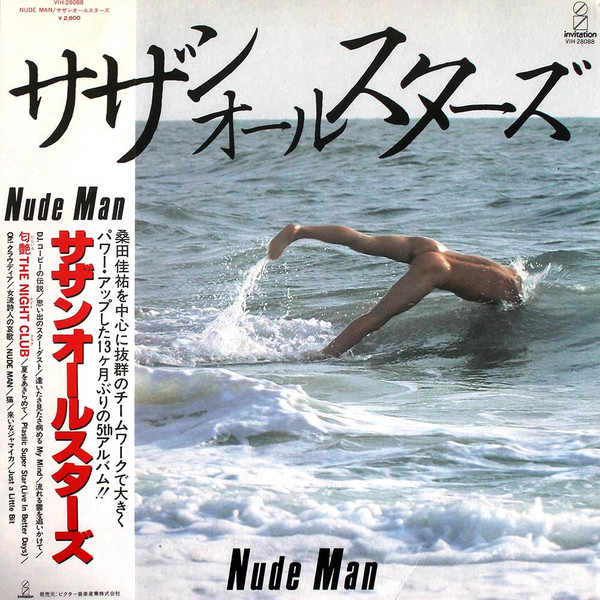
No comments:
Post a Comment